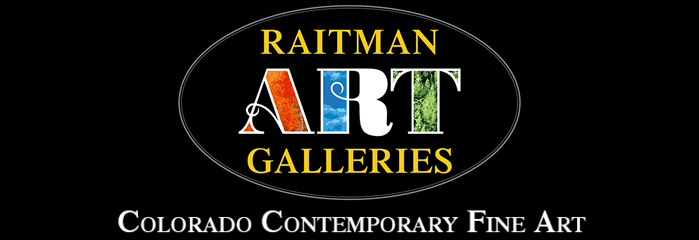Vitreous Enamel: Luminous and Ancient Art Form July 31 2014, 0 Comments
Vitreous enamel is an ancient art form. The medium dates back thousands of years but it is rarely seen these days. This weekend, two of the artists chiefly responsible for keeping vitreous enamel alive are in Breckenridge to show off the wide ranging collections of their work. The stories of how they began working with such a unique process are as steeped in history as the medium itself.
Vitreous enamel is the process of combining glass to metal through the use of heat. It is defined as a vitreous, glass-like coating fused to a metal base and is best explained as glass on metal. The medium was born in fire. Today the fusing process typically takes place in a kiln. The materials are fired at temperatures ranging from 1300 to 1500 degrees Fahrenheit. The process has as much to do with the longevity of the unique medium as does its beauty. Firing the glass to metal bonds the work; making it scratch, chemical and fire resistant, all necessary components in the medium’s rich history.
The first use of decorative enameling dates all the way back to 13th Century B.C. Six gold rings decorated in cloisonné enamel were discovered in a tomb on the island of Cyprus. Together they are known as the “Kouklia Rings.” They were created with gold, twisted wire and glass. Later, a gold scepter and orb decorated with white, pink and green glass was found. From here, cloisonné was born and centuries later Faberge eggs appeared as perhaps the best known use of vitreous enameling.
The more recent history of vitreous enamel involves a passing of the torch, so to speak. In addition, large scale iterations of the medium have taken a turn towards the fine arts. Fred Ball was born in 1945 and passed far too early in 1985. His experiments with vitreous enamel gained him critical acclaim as an artist and many of his massive murals are still visible today. Ball passed on his knowledge and expertise to Craig Ruwe, who in turn was responsible for teaching the artist Zingaro beginning in 2001. Ruwe too passed at a young age. Just prior he charged Zingaro with continuing the evolution of the medium by teaching more young artists how to work with the ancient technique. Zingaro kept this tradition alive by introducing the young Houston Llew to vitreous enamel.
Zingaro’s background as a painter has allowed him to approach the medium in a painterly manner. He is a master of color, movement and design. His formal art training began at the age of 11 as a student at the Swain School of Design. At the age of 16 he travelled from his home in Massachusetts to Tucson, Arizona, where he gained employment as a commercial mural artist and signwriter. His years as a professional artist are now measured in decades and his studies have taken place with several masters of their mediums, including Craig Ruwe, George Mandevellis and David Michael Kennedy. Today, Zingaro is seen as the master of vitreous enamel. His body of work includes nearly 1,000 original pieces, both large and small in scale. His work highlights the collections of renowned institutions like the National Dance Institute in New York and the Institute for Cultural Diversity in Berlin, as well as the private collections of Kelly Clarkson and Denzel Washington. Selected works will be on display this weekend at the Art on a Whim gallery.
Zingaro’s student, Houston Llew, has taken vitreous enamel and quickly risen to the top of our country’s young emerging artists. Llew began apprenticing with Zingaro in 2008 and quickly developed his own style within the ancient art form. Photo realistic imagery and inspiring quotes characterize his series of work. His “Spiritiles” combine wit and wisdom from timeless quotes with incredible designs. For example, Llew’s piece showing the silhouette of a child on a beach reads, “When you need a miracle, just look at your child and realize you created one.” His dragonfly borrows Mary Oliver’s verse and says, “I want to be improbable and beautiful and afraid of nothing as if I had wings.” Like Zingaro, Llew’s work has been avidly collected throughout the world.
Both artists will be in Breckenridge this weekend inscribing their work for collectors. Their work is always on display at the Art on a Whim gallery. Viewing their chosen medium of vitreous enamel is even more fascinating than the story behind the work. Luminous and contemporary yet rustic at the same time, each original work of art glows. The story behind the work, and the gentlemen responsible for carrying the torch of the ancient medium, just serves to enhance the brilliance that is vitreous enamel and the work of Zingaro and Houston Llew.
Detail from "Fun Time," A Zingaro and Houston Llew collaboration.

The full piece.

